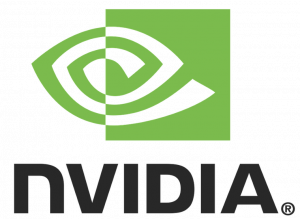How To Install CUDA on AlmaLinux 9

CUDA (Compute Unified Device Architecture) has revolutionized the world of high-performance computing by harnessing the power of NVIDIA GPUs. For users of AlmaLinux 9, a robust and community-driven enterprise Linux distribution, installing CUDA can unlock a wealth of possibilities in scientific computing, machine learning, and data analysis. This guide will walk you through the process of installing CUDA on AlmaLinux 9, ensuring you can leverage the full potential of your NVIDIA GPU for accelerated computing tasks.
Understanding CUDA and AlmaLinux 9
Before diving into the installation process, it’s crucial to understand what CUDA is and why it’s valuable for AlmaLinux 9 users. CUDA is a parallel computing platform and programming model developed by NVIDIA. It enables dramatic increases in computing performance by harnessing the power of GPUs (Graphics Processing Units) for general-purpose processing.
CUDA allows developers to use GPU-accelerated computing for a wide range of applications, including:
- Scientific simulations
- Machine learning and artificial intelligence
- Data analysis and visualization
- Computer vision and image processing
- Financial modeling
AlmaLinux 9, as a downstream, binary-compatible alternative to Red Hat Enterprise Linux (RHEL), provides a stable and secure platform for enterprise-grade applications. By installing CUDA on AlmaLinux 9, users can combine the reliability of this Linux distribution with the power of GPU-accelerated computing.
Prerequisites
Before proceeding with the CUDA installation, ensure your system meets the following requirements:
- An NVIDIA GPU that supports CUDA (check the CUDA-enabled GPUs list)
- AlmaLinux 9 installed and updated
- Root or sudo access to the system
- Sufficient disk space (at least 5GB for the CUDA Toolkit)
- A stable internet connection for downloading packages
To verify your GPU compatibility, run the following command in the terminal:
lspci | grep -i nvidiaThis command will display information about your NVIDIA GPU if it’s present in the system.
Preparing Your System
Before installing CUDA, you need to prepare your AlmaLinux 9 system. Follow these steps:
1. Update AlmaLinux 9
Ensure your system is up to date by running:
sudo dnf update -y2. Install Development Tools and Libraries
Install the necessary development tools and libraries with the following command:
sudo dnf groupinstall "Development Tools" -y
sudo dnf install kernel-devel kernel-headers -y3. Disable Nouveau Drivers
NVIDIA drivers conflict with the open-source Nouveau drivers. To disable Nouveau:
Create a file named /etc/modprobe.d/blacklist-nouveau.conf with the following content:
blacklist nouveau
options nouveau modeset=0Then, regenerate the kernel initramfs:
sudo dracut --force4. Configure EPEL Repository
Enable the Extra Packages for Enterprise Linux (EPEL) repository:
sudo dnf install epel-release -yDownloading CUDA Toolkit
To download the CUDA Toolkit:
- Visit the NVIDIA CUDA Toolkit download page.
- Select “Linux” > “x86_64” > “AlmaLinux” > “9” > “rpm (network)”.
- Copy the download command provided on the page.
Alternatively, you can use wget to download the CUDA repository package:
wget https://developer.download.nvidia.com/compute/cuda/repos/rhel9/x86_64/cuda-repo-rhel9-11.8.0-1.x86_64.rpmNote: The URL may change with newer CUDA versions. Always check the NVIDIA website for the latest download link.
Installing CUDA on AlmaLinux 9
Now that you have downloaded the CUDA repository package, follow these steps to install CUDA:
1. Install the CUDA Repository Package
sudo rpm -i cuda-repo-rhel9-11.8.0-1.x86_64.rpm2. Clean DNF Cache and Install CUDA
sudo dnf clean all
sudo dnf -y module install nvidia-driver:latest-dkms
sudo dnf -y install cuda3. Reboot Your System
After the installation is complete, reboot your system to load the NVIDIA drivers:
sudo rebootConfiguring the CUDA Environment
To use CUDA effectively, you need to set up the environment variables. Add the following lines to your ~/.bashrc file:
export PATH=/usr/local/cuda-11.8/bin${PATH:+:${PATH}}
export LD_LIBRARY_PATH=/usr/local/cuda-11.8/lib64${LD_LIBRARY_PATH:+:${LD_LIBRARY_PATH}}Note: Replace “11.8” with your installed CUDA version if different.
After editing the file, apply the changes:
source ~/.bashrcVerifying the CUDA Installation
To ensure CUDA is installed correctly:
1. Check CUDA Version
nvcc --version2. Run CUDA Samples
CUDA samples are not installed by default. To install and run them:
sudo dnf install cuda-samples-11-8 -y
cd /usr/local/cuda-11.8/samples/1_Utilities/deviceQuery
sudo make
./deviceQueryIf the installation is successful, you should see detailed information about your NVIDIA GPU and CUDA capabilities.
Installing CUDA Drivers
The CUDA drivers are crucial for the proper functioning of CUDA-enabled applications. While the previous steps should have installed the drivers, you can verify and update them if necessary:
1. Check Current Driver Version
nvidia-smi2. Update CUDA Drivers (if needed)
sudo dnf update nvidia-driver nvidia-settingsOptimizing CUDA Performance on AlmaLinux 9
To get the best performance from CUDA on AlmaLinux 9:
1. BIOS Settings
- Enable PCI-Express Gen 3 or higher
- Disable power management features that might throttle GPU performance
2. System-Level Optimizations
- Use performance CPU governor:
sudo cpupower frequency-set -g performance - Disable CPU frequency scaling: Edit
/etc/default/gruband addintel_pstate=disableto theGRUB_CMDLINE_LINUXline
3. Application-Level Tuning
- Use CUDA-aware MPI for distributed computing applications
- Optimize memory transfers between CPU and GPU
- Utilize CUDA streams for concurrent kernel execution
Troubleshooting and Common Issues
If you encounter problems during or after the CUDA installation, consider these common issues and solutions:
1. Installation Failures
- Ensure all prerequisites are met
- Check system logs:
journalctl -xe - Verify that Nouveau drivers are properly disabled
2. Compatibility Problems
- Ensure your GPU is CUDA-compatible
- Check for conflicts with other installed drivers or software
3. Performance Issues
- Monitor GPU usage with
nvidia-smi - Check for thermal throttling
- Ensure proper power management settings
Congratulations! You have successfully installed CUDA. Thanks for using this tutorial for installing NVIDIA CUDA on the AlmaLinux 9 system. For additional help or useful information, we recommend you check the official CUDA website.